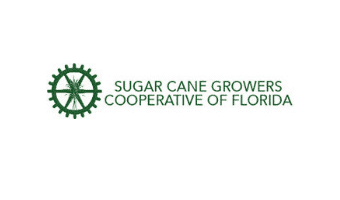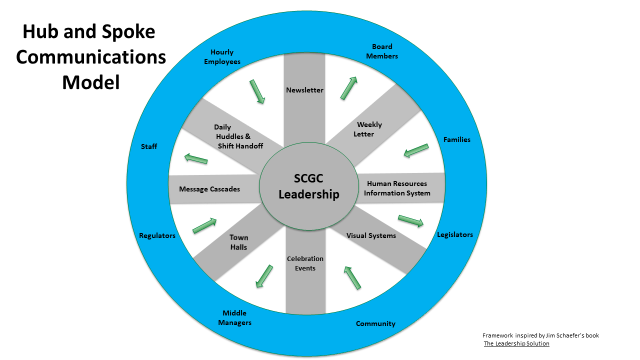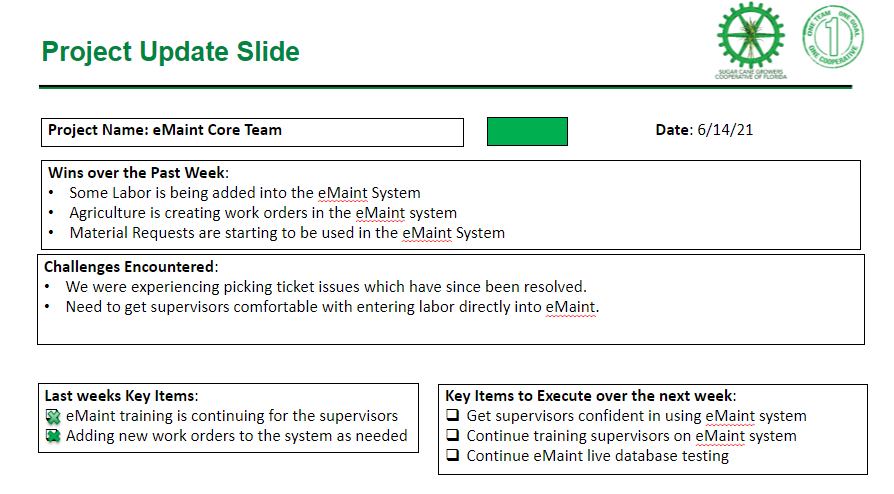Sugar Cane Growers Cooperative: Transforming the Organization to Meet Performance Goals
solutions
sectors

SCGC Transforms the Organization to Meet Performance Goals
Background and Challenge
Sugar Cane Growers Cooperative (SCGC), a 54-member farmers’ cooperative in Belle Glade, Florida, needed to change. The 60-year-old operation had been a very traditional sugar mill and was not applying modern industrial practices.
Like many industries in the refining and processing sectors, SCGC was experiencing pressures from multiple sources that made transforming their business a strategic imperative. Globalization, variable year-to-year financial results, increasing regulatory complexity, and a lack of long-term focus for the organization were many of the significant issues that required leadership to transform their team, define their values, and equip the organization for a dramatically different competitive environment in which they would be operating. In short, SCGC needed to transform their organization into a highly reliable firm that leverages technology and consistently meets its growth and performance goals.
The Continuous Improvement Journey Begins: Creating the Foundation for Transformation
An initial assessment identified a number of weak areas that needed to be addressed to get the continuous improvement journey started. Over a nine-month period, made even more complex by COVID-19 pandemic protocols, LCE achieved some significant milestones to enable the transformation.
- Built a reliability steering team that was highly engaged in creating the future
- Selected and applied PROSCI’s change management methodology and tools to equip the site reliability steering team for success in moving their work groups through substantial change. This organizational change management initiative included providing introductory training, performing ADKAR assessments with the steering team and delivering a three-day focused workshop.
- Established focused teams to work in three areas: Reliability Engineering, Work Management and Materials Management
- Performed equipment walk downs to adequately load a new Computerized Maintenance Management System with an accurate asset listing
- To upgrade the knowledge of best practices, delivered a four-session Reliability Excellence for Managers Course for the Reliability Steering Team. This workshop provided four opportunities for key leaders to spend a total of 12 days together talking about where they were and what they wanted to become. It was a powerful event in the engagement, enabling a newly formed executive leadership team to become unified around attaining their vision for the future.
Foundational Efforts Yield Significant Results in Less than 12 Months
Leadership and Change Team
- Built Governing Principles – To transition to a culture of more transparency and accountability, the Reliability Steering Team established a set of governing principles:
- People – We value people; WE are ALL valued and empowered to impact change.
- Planning – We value planning; proper planning is essential for success.
- Reliability – We value reliability that enables success in safety, quality, production and performance.
- Technology – We value technology and innovation; technology enhances our continuous pursuit of improvement.
- Financial – We value financial success; we exist to deliver sustainable financial returns to our member-growers.
- Established a Meaningful Vision – The personnel at the site were intellectually locked into a two-season mindset:
- We have to bring in the crop and process it during the crop season.
- We have to rebuild the plant equipment during the repair season.
Leadership worked hard to focus the organization past those two mindsets. After several iterations, the leadership team arrived at the following SCGC Vision: “…to deliver the greatest value to our member-growers and employees by being an industry leader in all that we do.” Although it created some immediate tension, it became a test for both people and activities – does this person and does this activity move us closer to making our Vision a reality?
Work Control Team
- Completed seven Work Control Processes and related documents
- Developed training documents for all processes
- Coached their Planner in proper planning and scheduling techniques
- Developed and rolled out coaching cards to be fully implemented after CMMS (eMaint) go-live
- Captured all activities during the 2020 repair season which would become the basis for their first written repair season to be executed in 2021
Materials Management Team
- Completed seven Materials Management Processes and related documents
- The team developed SOPs for Obsolete Inventory Identification and Cycle Counting Processes.
- Developed a Layup Maintenance program (rotating shafts on motors and gearboxes)
- Converted fasteners from warehouse issue to free issue at point of use.
- Designed and constructed a vertical storage solution for the large hydraulic cylinders to prevent seal damage
- Designed and constructed a belt storage solution that will prevent failures based on improper storage
- Completed a 5S project in the warehouse
- Set up a tote-based kitting system for creating job kits for planned maintenance jobs
- Over 200K in obsolete materials were identified and were in the process of being disposed of, written off, recycled, or sold.
Reliability Engineering Team
- Developed eight Reliability Engineering Processes
- Created a Loss Elimination Process
- Created a Root Cause Analysis Function
Equipment Walk Down and Hierarchy Construction
LCE’s Asset Management Technician led an effort to walk down the assets in the mill. This critical step in the future success for the eMaint system allowed SCGC to load an accurate asset listing into the system and start with a high degree of system integrity.
- The asset listing grew by 50%
- Approximately 2000 assets were verified
- Over 970 new assets were added
- 215 asset IDs were identified for deletion
Operational Improvements for Crop Processing in 2019 / 2020
- Productivity gains were driven by markedly strong improvements in both uptime and sugar production rates well ahead of original projections: 78.2% OEE results vs. projected 75.3%. This represented $1,000,000 in additional margin for the site.
- Maintenance spending reductions far exceeded original projections for the first year: $1.6MM vs. $0.5MM.
An Extended Scope of Work Delivers Improved Capabilities and Results
After the first nine-month engagement, SCGC asked LCE to provide a proposal for continued support as they configured and prepared for their eMaint implementation. The scope for the next nine months included focusing on these areas:
- Implementing the SCGC Communications System
- Implementing a Continuous Improvement Governance System
- Coaching for improved leadership
- Developing plant Capital Delivery processes and associated tools
- Establishing the Reliability Engineering function
- Repair season planning and preparation
- Developing PMs for loading into eMaint
- Cleaning up MRO nomenclature
LCE provided a Principal Consultant, a Work Management / Materials Management Coach, and two Asset Management Technicians to accomplish this work.
SCGC Communications System Implementation
LCE helped successfully launch a new communications system. The pandemic environment made it necessary to use a phased approach. Phase 1 items, which did not violate social distancing protocols, were deployed first:
Weekly Communication Note from Leadership – this one-page document was co-written by the SCGC president and representatives from the agricultural and mill sides of the operation. Commentary in this document was candid and very transparent.
Monthly SCGC Newsletter – This plant-wide newsletter emphasized elements of the reliability implementation, software system changes, new employees to the organization, and employee profiles of existing employees that were a key part of making the SCGC vision a reality.
Upgrade in Electronic Communications Systems – The plant upgraded electronic messaging systems both for visitors and employee public areas. The SCGC vision became the screensaver for all SCGC computer screens.
Shift Handoff Meetings – These meetings were developed to upgrade shift handoffs, initially stood up in the Mill area and then expanded into the Fabrication area.
SCGC Communication System Program Audits – The HR function conducted routine audits of the communication system to ensure that program elements were being executed upon and the systems were functioning properly.
LCE also helped develop a hub and spoke model that SCGC can use for monitoring and continuous improvement of the communications system.

Continuous Improvement Governance Model
The existing culture at SCGC was not well developed around task follow up and project execution. Actions were verbally committed to but there was no mechanism to make execution and follow through visible. LCE helped SCGC implement a Continuous Improvement Governance Model to shift this cultural norm and drive upgrades in how the site managed continuous improvement. Major elements included:
Project Charters – We developed a standard format based on A3 methodology for any project that:
- Required a team to be formed
- Was complex because it involved multiple functional areas
- Had a business case that demonstrated value
This simple format for project charters forced project leaders to take intellectual ownership of the project and to formalize commitments by the project team and team leader.
Project Plans – We developed expectations that a basic project plan with dates and milestones be created for the chartered projects. These project plans could be as simple as a list of tasks in a MS Word document, a more complex arrangement in MS Excel using the Tactical Implementation Plan format, or in more complex projects, a MS Project file.
Chartered Project Update Meetings – Every two weeks the leadership would check in for a quick project update report, using a simple one-slide format for updates, as shown below.

Project team leaders uploaded this update slide to a Microsoft Teams folder prior to the meeting. A trained facilitator led the project update meetings.
Coaching for Improved Leadership
LCE developed and delivered coaching to coach key leaders in the organization, as well as leaders that had responsibility for key projects. They were coached over a wide variety of subjects mostly related to building effective teams, personal leadership behaviors, effective change management competencies, and communication effectiveness.
Some recipients of the coaching experienced significant upgrades in their leadership competencies. It was clear to all participants that expectations for personal performance were increasing and a culture of accountability was being created.
Plant Capital Delivery Processes and Associated Tools
The site’s capital delivery process was not well developed. As a result, SCGC leadership had a low level of credibility with the board of directors who served as the capital approval mechanism for the site. LCE developed a small team of stakeholders and initiated the following actions:
- Introduced the LCE Capital Delivery processes and reviewed them in detail.
- Introduced the concept of designing for reliability and provided an overview of those processes.
- Reviewed major program gaps at SCGC to the processes.
- Agreed upon what staffing was going to be required to effectively manage capital at the site.
It became clear by the third meeting that the site did not have the resources in place to effectively manage capital delivery. At the end of this effort, leadership at the site was conducting a search for both a capital delivery leader and an additional capital project manager. The processes and program architecture are in place for use when SCGC has the people in place to deploy them.
Established the Reliability Engineering Function
This work was a continuation of the Focus Team work from the initial engagement, but progress accelerated when SCGC hired an experienced Reliability Engineer.
- Stood up reliability teams in the mill’s tandem area
- Greatly improved the effectiveness of the Root Cause Analysis function. During the engagement, 15 events were investigated that had tripped the RCFA triggers and 73 recommendations were made to prevent reoccurrence, 15% of which were promptly resolved. (The remaining recommendations were pending systems assessments and upgrades.)
- Tactical efforts improved reliability in the tandem mill slat, transformers, and evaporators.
- Coached the eMaint core team on the eventual use of eMaint in the RE function
The Reliability Engineer hired by SCGC was a former LCE Reliability Engineer. His joining the SCGC team was a major victory for program excellence and future progress.
Repair Season Planning and Preparation
Historically the SCGC site had no written plan for repair season execution. Mismanagement, cost overruns, and poor startup performance were the norm. In 2020, the LCE Work Management Coach and the SCGC Planner documented all the activities that were accomplished during the repair season. This allowed the site to be much better prepared for the 2021 repair season. With the improved Repair Season Plan in place:
- All 14 mill areas had a complete repair season plan with associated work orders in eMaint.
- Each supervisor received packages with the Repair Season Plan and schedule, eMaint usage expectations, single point lessons, and their area work orders.
- Over 1000 work orders were built and loaded into eMaint for execution in the 2021 repair season. This will allow both material usage and actual labor consumption to be captured for the first time at the site.
PM Development
The site’s needs were quite basic. There were no written preventive maintenance procedures. LCE’s asset management technician worked closely with SCGC’s RE to develop 92 bilingual PMs for loading into eMaint.
MRO Nomenclature Cleanup
LCE’s asset management technician led an effort to clean up the names and descriptions of SCGC’s spare parts inventory. Over 6000 items were corrected during an eight-week focused effort LCE. The site will be continuing these cleanup efforts during the upcoming repair season.
The Continuous Improvement Journey Continues
The Reliability program continues at the Sugar Cane Cooperative as they work through business opportunities and challenges. The organizational leaders are serious about making the SCGC Vision a reality and recognized how significantly LCE had helped change how the Cooperative operates. LCE will continue to be a partner in their efforts to become a highly reliable organization.


